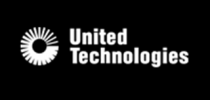Thermoelectric Energy Harvesting Markets, 2028 - Focus on Home automation, Commercial & Retail Buildings, and Industrial Automation
DUBLIN, September 4, 2017 /PRNewswire/ --
The "Thermoelectric Energy Harvesting 2018-2028" report has been added to Research and Markets' offering.
http://mma.prnewswire.com/media/539438/Research_and_Markets_Logo.jpg
"Thermoelectric Energy Harvesting 2018-2028 - Technologies, Devices & Applications for Thermoelectric Generators"
Thermoelectric generators are devices which convert temperature differences into electrical energy. The principle phenomenon that underpins thermoelectric energy generation is known as the Seebeck effect: the conversion of a temperature differential into electricity at the junction of two materials.
Although thermoelectric phenomena have been used for heating and cooling applications quite extensively, electricity generation has only seen very limited market in niche applications and it is only in recent years that interest has increased regarding new applications of energy generation through thermoelectric harvesting.
The new applications are varied and the vertical markets benefiting from new devices range from condition monitoring in industrial environments, smart metering in energy market segments, to thermoelectric applications in vehicles, either terrestrial or other.
This report gives an overview of devices, materials and manufacturing processes, with a specific focus on emerging technologies that allow for new functionality, form factor and application in various demanding environments. Whether it is operation in high temperatures or corrosive environments, applications with increased safety demands or components that need to be thin, flexible, or even stretchable, there is a lot of research and development work worldwide which is highlighted.
Waste heat recovery systems in vehicles: A large number of car companies, including Volkswagen, VOLVO, FORD and BMW in collaboration with NASA have been developing thermoelectric waste heat recovery systems in-house, each achieving different types of performance but all of them expecting to lead to improvements of 3-5% in fuel economy while the power generated out of these devices could potentially reach up to 1200W. What does the future hold with electrification of vehicles globally picking up pace and the market conditions turning unfavorable for thermoelectrics that require the high temperatures present in internal combustion engines for optimal operation.
Wireless sensor network adoption. Wireless sensors powered by thermogenerators in environments where temperature differentials exist would lead to avoiding issues with battery lifetime and reliability. It would also lead to the ability to move away from wired sensors, which are still the solution of choice when increased reliability of measurement is necessary. Some applications have low enough power demands to operate with small temperature differentials, as small as a few degrees in some cases. These types of developments increase adoption trends.
Consumer applications: In these applications, the type of solution that thermogenerators provide varies: it could be related to saving energy when cooking by utilising thermo-powered cooking sensors, powering mobile phones, watches or other consumer electronics, even body sensing could become more widespread with wearables such as sensory wristbands, clothing or athletic apparel that monitor vitals such as heart rate, body temperature, etc
Key Topics Covered:
1. EXECUTIVE SUMMARY
1.1. Executive summary and conclusions
1.2. Market forecasts for thermoelectric energy harvesters in different applications 2016-2028
1.3. Wireless sensors, actuators, and wireless sensor networks
1.4. Home automation, commercial & retail buildings, and industrial automation.
1.5. Waste heat recovery systems in vehicles
1.6. Consumer, military and aerospace applications
1.7. Additional challenges and opportunities for thermoelectric devices
2. INTRODUCTION
2.1. The Seebeck and Peltier effects
2.2. Manufacturing of thermoelectric generators
2.2.1. Thermoelectric generator design considerations
2.3. Thin film thermoelectric generators
2.4. Material choices
2.5. Organic thermoelectrics - PEDOT:PSS, not just a transparent conductor
2.6. Bi-functional thermoelectric generator/ pre-cooler: DC power from aircraft bleed air
3. OTHER PROCESSING TECHNIQUES
3.1. Manufacturing of flexible thermoelectric generators
3.2. AIST technology details
4. APPLICATIONS
4.1. Automotive applications
4.1.1. BMW
4.1.2. Ford
4.1.3. Volkswagen
4.1.4. Challenges of Thermoelectrics for Vehicles
4.1.5. Peak in overall car sales then peak in electric car sales k globally
4.2. Wireless sensing
4.2.1. TE-qNODE
4.2.2. TE-CORE
4.2.3. EverGen PowerStrap
4.2.4. WiTemp
4.2.5. GE Logimesh
4.3. Aerospace
4.4. Implantable thermoelectrics
4.5. Thermoelectrics in consumer electronics/wearables
4.5.1. Matrix PowerWatch
4.5.2 Academic research on wearables
4.5.3. Device size requirements in wearables
4.6. Solar and thermoelectric energy harvesting in one device
4.6.1. Thermoelectric energy harvesting in consumer electronics- discussion
4.6.2. Thermoelectric energy harvesting in consumer electronics- power requirements
4.6.3. Thermoelectric energy harvesting in consumer electronics- e-textile integration
4.7. Thermoelectric energy harvesting in building & home automation -
4.7.1. The Sentinel
4.7.2. Home and commercial building automation - discussion
4.8. Other applications
4.8.1. Micropelt-MSX
4.8.2. PowerPot - Spark
5. INTERVIEWS - COMMERCIALIZATION CONSIDERATIONS
5.1. Ford
5.2. Microsemi
5.3. MSX Micropelt
5.4. Rolls Royce
5.5. TRW
5.6. Volvo
6. THERMOELECTRIC ENERGY HARVESTERS: MARKET FORECASTS
6.1. Applications and market segmentation
6.1.1. Wireless sensors and actuators
6.1.2. Smart buildings and Home automation
6.1.3. Military and Aerospace
6.1.4. Other industrial applications
6.1.5. Consumer applications
6.1.6. Other applications
6.2. Unit price considerations
6.3. Thermoelectrics for Energy Harvesting units value dollars 2016-2028
6.4. Market forecasting revenue
7. COMPANY PROFILES
7.1. Alphabet Energy, Inc.
7.2. EVERREDtronics Ltd
7.3. Ferrotec Corporation
7.4. Gentherm
7.5. Global Thermoelectric (now Gentherm)
7.6. GMZ Energy
7.7. greenTEG
7.8. Hi Z Technology, Inc
7.9. KELK Ltd
7.10. Laird/ Nextreme
7.11. Marlow
7.12. mc10
7.13. Micropelt GmbH
7.14. National Institute of Advanced Industrial Science & Technology (AIST)
7.15. Novus
7.16. O-Flexx
7.17. OTEGO
7.18. Perpetua
7.19. RGS Development
7.20. Romny Scientific
7.21. Tellurex Corporation
7.22. Termolife Energy Corporation
7.23. Yamaha
For more information about this report visit https://www.researchandmarkets.com/research/6mxd9q/thermoelectric
Media Contact:
Research and Markets
Laura Wood, Senior Manager
press@researchandmarkets.com
For E.S.T Office Hours Call +1-917-300-0470
For U.S./CAN Toll Free Call +1-800-526-8630
For GMT Office Hours Call +353-1-416-8900
U.S. Fax: 646-607-1907
Fax (outside U.S.): +353-1-481-1716
View original content:http://www.prnewswire.com/news-releases/thermoelectric-energy-harvesting-markets-2028---focus-on-home-automation-commercial--retail-buildings-and-industrial-automation-300513462.html
SOURCE Research and Markets




